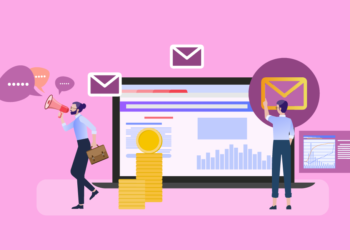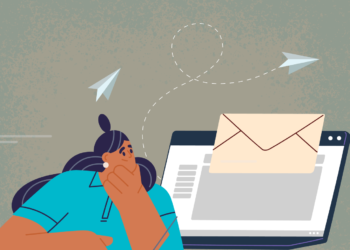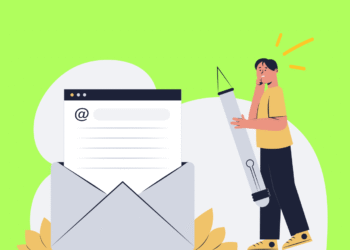Setting up an automated welcome email series might sound like a daunting task, but trust me—it’s one of the best investments you can make in your email marketing strategy.
When someone new subscribes to your list, that’s the moment they’re most interested in what you have to offer. A well-crafted welcome series can set the tone for your entire relationship with that subscriber, turning casual browsers into loyal customers. Plus, once it’s set up, it runs on autopilot, greeting every new subscriber with a warm, personalized touch. Let’s dive into how to set up an automated welcome email series step by step, so you can make a stellar first impression every time.
Step 1: Define Your Goals for the Welcome Series
Before you start crafting your emails, it’s important to know what you want to achieve with your welcome series. Are you trying to drive immediate sales, educate your new subscribers about your brand, or simply build a relationship and earn their trust? Your goals will dictate the content and structure of your emails.
For example, if your goal is to drive sales, you might include a special discount code or highlight best-selling products in your series. If your focus is on education, you could send a series of tips, tutorials, or guides related to your products or services. The clearer your goals, the more targeted and effective your welcome series will be.
Step 2: Choose the Right Email Marketing Tool
To set up an automated welcome series, you’ll need an email marketing tool that supports automation. Popular choices include platforms like Mailchimp, ActiveCampaign, Klaviyo, and MailerLite. These tools offer drag-and-drop editors and pre-built automation templates that make it easy to create and manage your welcome series without needing a degree in coding.
When choosing your tool, look for features like easy segmentation, detailed analytics, and customizable workflows. Many of these platforms offer free trials or basic plans that allow you to test their features before committing. Take some time to explore the options and find the one that best fits your needs and budget.
Step 3: Plan Your Welcome Email Sequence
A good welcome series usually consists of 3-5 emails spaced out over a few days or weeks. The idea is to guide your new subscribers on a journey, gradually introducing them to your brand, your products, and the value you offer. Here’s a simple structure you can start with:
- Email 1: The Warm Welcome
Send this email immediately after someone subscribes. Thank them for joining your list, introduce yourself and your brand, and set the tone for what they can expect from your emails. This is also a great place to offer a small incentive, like a discount or a free resource, as a thank-you for signing up.
- Email 2: Introduce Your Brand
A day or two after the first email, send an introduction to your brand. Share your story, your mission, and what makes you unique. This email is all about building a connection and helping your subscribers feel like they’re part of something special.
- Email 3: Highlight Your Products or Services
A few days later, send an email showcasing your best products or services. Include testimonials, reviews, or case studies to build trust and demonstrate value. If you have any popular blog posts or resources, now’s a great time to share those too.
- Email 4: Provide Value with Tips or a Guide
This email should offer something valuable, like a guide, a checklist, or some expert tips related to your industry. The goal here is to position your brand as a helpful resource and keep your subscribers engaged.
- Email 5: Call to Action
Wrap up your series with a clear call to action. Whether it’s encouraging a purchase, signing up for a webinar, or simply following you on social media, make sure you guide your subscribers on the next step they should take.
Step 4: Write Engaging and Personalized Content
Now that you’ve mapped out your sequence, it’s time to write your emails. Keep your content friendly, conversational, and focused on the reader. Use personalization wherever possible—addressing your subscribers by their first name can go a long way in making your emails feel more personal and engaging.
Be sure to include clear, concise calls to action in each email. If you’re offering a discount, make it easy for your subscribers to claim it. If you’re directing them to your website, ensure the links are obvious and clickable. And don’t forget to proofread! Nothing undermines professionalism like a glaring typo or broken link.
Step 5: Set Up Your Automation Workflow
With your content ready, it’s time to set up the automation in your chosen email marketing tool. Most platforms have a visual workflow builder that makes this process pretty straightforward. You’ll start by creating a new workflow and selecting a trigger, which in this case will be a new subscriber joining your list.
Next, add each of your emails to the workflow, setting the timing between them based on your plan. For example, you might send the first email immediately, the second one two days later, and so on. Be sure to test the workflow before going live to make sure everything is working as expected—there’s nothing worse than finding out that your emails aren’t being sent as planned!
Step 6: Monitor and Optimize Your Series
Once your welcome series is up and running, your job isn’t quite done. Regularly check your email analytics to see how your series is performing. Look at metrics like open rates, click-through rates, and conversion rates to gauge how well your emails are resonating with your audience.
If you notice that certain emails are underperforming, don’t be afraid to make tweaks. Sometimes a simple change, like adjusting the subject line or altering the timing, can make a big difference. The goal is to continually refine your welcome series so it’s as effective as possible.
Conclusion: Start Strong with Your Welcome Series
Setting up an automated welcome email series is one of the best ways to make a great first impression and build a strong foundation with your new subscribers. By taking the time to define your goals, choose the right tools, and craft engaging content, you’ll be well on your way to creating a welcome series that not only introduces your brand but also drives engagement and conversions.
Remember, the key to a successful welcome series is to keep it personal, valuable, and aligned with your brand’s voice. Start small, test your approach, and don’t be afraid to make adjustments as you go. With the right strategy in place, your welcome series can become a powerful tool in your email marketing arsenal, setting the stage for long-term success. Happy automating!








